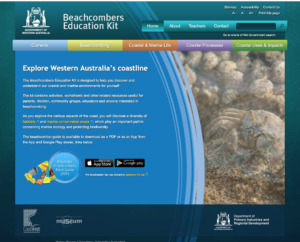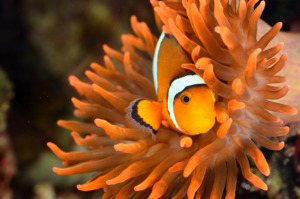If you’ve got a little bookworm in your house then there’s a good chance you have the Julia Donaldson book, Sharing a Shell too. (If not, you can download audible versions online).
Begin your week with reading the Sharing a Shell book with your little one/s. Engage them in a discussion about who helped who in the story – e.g. the anemone helped to keep the crab safe from the fish. What other situations in nature can you think of where this might occur? To help, some other marine examples include clownfish and sea anemone; cleaner shrimp and large fish; whale shark and remora.
Following your reading, use Student Worksheet: Sharing a Shell – order the story to discuss the order of events as they occurred. For Kindy and Pre Primary students, you could do this verbally, or simply number the statements with them and ask them to draw something from that part of the story. Year 1-2 students can cut the statements out and glue them in order, drawing a picture for each of the statements.
In our next lesson, Sharing a Shell – Fact or Fiction?, we discuss the difference between informative and imaginative texts. Recall the creatures from Sharing a Shell. Discuss the imagery in the story and the (rhyming) language used. Source a simple informative book on sea stars, or you could use the Echinoderms Fact Sheet from the Beachcombers Education Kit to compare how the imagery (photos) and language (more technical) is different. Use the Student Worksheet: Fact or Fiction to guide your discussion.
In the lesson A day in the life of … you will explore one of the creatures from the story Sharing a Shell in more detail. Brainstorm with your child, all of the creatures that were in the story. Ask them to choose their favourite creature (and discuss why was it their favourite). You can use Student Worksheet: A Day in the Life of … to guide their thinking about what that creature might do, eat and hide from. Students could present their responses in a variety of ways including a poster or even a puppet show (or Claymation if you want to get really clever!). This activity will have your children thinking about what creatures might live in a rock pool and the challenges they face to survive.
The Lesson: Life in a Rock Pool allows for a lot of creativity! You might like to reread the story with your child to begin with. Have a chat about any rockpools you may have explored at the beach in the past and what you saw. In this lesson, you will create your own rockpool habitat. This may be as simple as drawing or painting a picture, or you may like to provide your child with items to create a rock pool play tray. If you have a sandpit at home, you could even build a rock pool habitat in there!
Finish the week with a fun art activity, creating your own aquarium – but this is one you don’t have to feed or clean! Use the templates provided in our Fishy Fun Sheet: Diorama – Virtual Aquarium to create your own seagrass or coral reef themed virtual aquarium. You can add things such as cellophane, pipe cleaners and sand to give your diorama a realistic look.
We’d love to see pictures of your learning journey – share them with us either via email – marinewaters@fish.wa.gov.au, Facebook (@MarineWATERS) or Instagram (@marine.waters).

